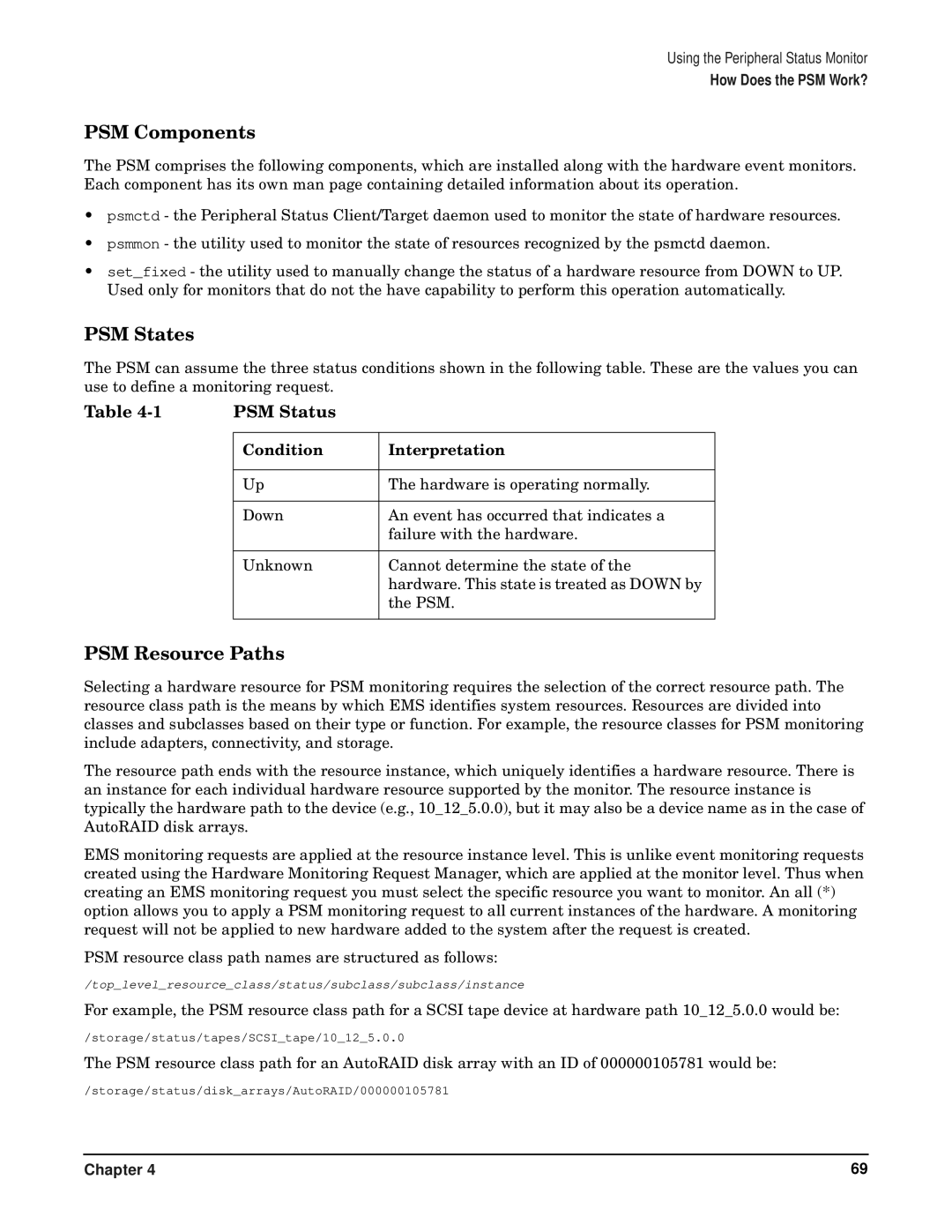Using the Peripheral Status Monitor
How Does the PSM Work?
PSM Components
The PSM comprises the following components, which are installed along with the hardware event monitors. Each component has its own man page containing detailed information about its operation.
•psmctd - the Peripheral Status Client/Target daemon used to monitor the state of hardware resources.
•psmmon - the utility used to monitor the state of resources recognized by the psmctd daemon.
•set_fixed - the utility used to manually change the status of a hardware resource from DOWN to UP. Used only for monitors that do not the have capability to perform this operation automatically.
PSM States
The PSM can assume the three status conditions shown in the following table. These are the values you can use to define a monitoring request.
Table | PSM Status |
|
|
|
|
| Condition | Interpretation |
|
|
|
| Up | The hardware is operating normally. |
|
|
|
| Down | An event has occurred that indicates a |
|
| failure with the hardware. |
|
|
|
| Unknown | Cannot determine the state of the |
|
| hardware. This state is treated as DOWN by |
|
| the PSM. |
|
|
|
PSM Resource Paths
Selecting a hardware resource for PSM monitoring requires the selection of the correct resource path. The resource class path is the means by which EMS identifies system resources. Resources are divided into classes and subclasses based on their type or function. For example, the resource classes for PSM monitoring include adapters, connectivity, and storage.
The resource path ends with the resource instance, which uniquely identifies a hardware resource. There is an instance for each individual hardware resource supported by the monitor. The resource instance is typically the hardware path to the device (e.g., 10_12_5.0.0), but it may also be a device name as in the case of AutoRAID disk arrays.
EMS monitoring requests are applied at the resource instance level. This is unlike event monitoring requests created using the Hardware Monitoring Request Manager, which are applied at the monitor level. Thus when creating an EMS monitoring request you must select the specific resource you want to monitor. An all (*) option allows you to apply a PSM monitoring request to all current instances of the hardware. A monitoring request will not be applied to new hardware added to the system after the request is created.
PSM resource class path names are structured as follows:
/top_level_resource_class/status/subclass/subclass/instance
For example, the PSM resource class path for a SCSI tape device at hardware path 10_12_5.0.0 would be:
/storage/status/tapes/SCSI_tape/10_12_5.0.0
The PSM resource class path for an AutoRAID disk array with an ID of 000000105781 would be:
/storage/status/disk_arrays/AutoRAID/000000105781
Chapter 4 | 69 |
